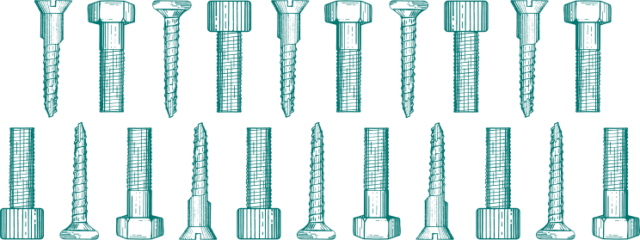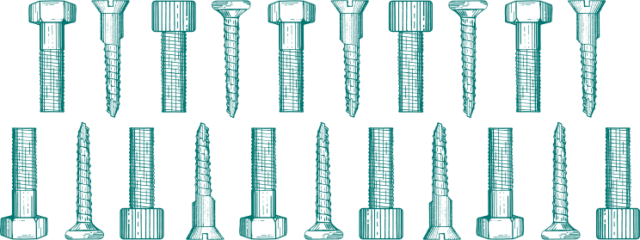DP Perspectives on Multi-Sourcing
For sophisticated global manufacturers, duel (or multi) sourcing models are nothing new. But the current global supply chain environment has placed the issue at the top of the agenda for procurement teams.
Sourcing decisions are driven at a high level by corporate goals. However, balancing price, quality and time is a challenge for schedulers, production engineers, production managers and expediters, especially when some of these stakeholders have naturally contrasting priorities. The direction of travel has been positive with manufacturers being able to drive down pricing while maintaining quality all within acceptable lead-times. At DP, we have worked with clients to drive down component pricing by as much as 95% through procuring product from new suppliers in the far east, to the benefit of our customers’ margins.
Over the past 18 months, the relatively calm waters in the supply ecosystem have become distinctly more choppy.
Geo-political, macro-economic, logistical and commodity-related forces have made it more difficult for OEMs to maintain achieve financial goals while preserving the status-quo.
Increasing lead-times tend to be reason for the most immediate and visible stresses on sourcing models. In the space of a few months, component engineers have gone from quoting a standard 120 days plus voyage by sea to 180 days (potentially as much as 300 days) which, after many years of stability, has caught some European manufactures off-guard.
The magnitude of recent supply chain issues has forced manufacturers to develop awareness of those product lines could create the largest adverse effects on costs and production. However, since procurement teams are typically tasked with sourcing hundreds of product variants, it can be extremely difficult for them to spot which product lead-times have extended.
Understandably the focus of procurement teams is skewed towards big ticket, highly engineered components. So, when an order for a twelve pence screw needs re-submitting, a lot may have changed since the previous batch was delivered, especially if the item has a quirk to it.
As the scheduled delivery time approaches and it becomes clear the component is unlikely to arrive as planned, calculations are quickly done to assess stock levels of the requisite parts against production schedules. If production plans appear threatened, the option of last resort, namely air freight, rapidly becomes the only route forward.
In an instant the cost savings accrued by achieved by sourcing from suppliers in the far east can be dwarfed. We are seeing instances where the cost of urgently shipping items to Europe is outstripping the value of the parts by a factor of four or five, which is obviously a stark cost for Chief Procurement Officers to bear.
Also, given the airtime needed to resolve issues related to everything from three pence washers to twenty pence bolts, it also creates big distractions for procurement teams.
For items with high unit costs, the cost of expediting an individual shipment may be significant in isolation but bearable as a one-off event. However, where the per unit cost is small, the financial sensitivities are far greater. Across these low-ticket components, it is crucial to identify and monitor the lines most at risk of delay.
Moreover, given most manufacturers have a long tail of components with low per-unit costs, they can face a situation in which issues are developing in parallel across several lines. A delayed response could result in several items being shipped by air in a compressed timeframe.
To illustrate by way of a crude example…
A manufacturer sourcing 400 components may have 80% of its spend on materials concentrated on 10 items. Any change in these prices will therefore have a significant impact on its gross margin. Understandably, the manufacturer will micro-manage the sourcing of these products. Faced with a potential delay, the company will pay the freight to ensure that component arrives on time. It’s a logical decision to pay a few thousand in air freight to expedite parts worth 10 times that or more.
The picture changes considerably should the supply chain be affected by broader supply-chain issue. Disruption to lead times, perhaps due to reduced production capacity overseas, could rapidly extend lead times for dozens of parts simultaneously. In this scenario, the manufacturer may be facing a £3k bill to expedite 20 separate part lines. Further, given these parts will likely be low in value at, say, £2k per shipment, the impact is a 150% jump in the cost of sale across 5% of the component categories.
Although the expediting of these parts may avert a production stoppage costing £50k+ per day, the cost implications of sending many shipments by air rapidly becomes unsustainable. Moreover, if the lead times are extended for some time, each of the part lines may need multiple shipments by air, which greatly compounds the problem.
With these market forces in constant flux, changes made by manufacturers need to be adaptable and pro-active.
Part of the answer lies in hedging against lengthening lead times; i.e. having the ability to source individual products from suppliers in different regions. Yet knowing when and how to implement new souring models for specific part lines is complex.
Mitigating financial risk begins with an assessment of the worst-case cost position. In particular, the impact of using air freight as a last resort must be accounted for up front.
It is crucial for manufacturers to maintain a watch list of items likely to be affected in this way.
Creating a watch list of items is dependent on knowledge sharing within procurement teams, as well as vertically within supply chains. This provides an opportunity for third party sourcing partners to add significant value. As a long-term supplier to a range of industries, at DP we benefit from managing thousands of product SKUs, which we believe can yield tangible benefits for our customers. At DP, we configure our account teams to maximise knowledge sharing. Where we identify a potential issue with, say, the sourcing of a component in a specialist raw material from a specific country in Asia, we are able to brief managers on accounts which may be facing similar challenges. It enables our team to maintain real-time awareness.
Once a potential issue is identified and logged for discussion with the customer, attention turns to developing sourcing options. If lead-time is the primary concern, the exam question is essentially: which producers closer to customer will enable us to maintain quality (and often traceability and compliance) standards at the lowest achievable cost?
For customers based in western-Europe, we aim to identify options from broadly two supply routes: fringe continental markets and home (or near to home) markets. Benchmarking costs across two routes help frame the potential costs and benefits.
In our dialogue with customers, we are increasingly using the concept of blended cost to help guide decision-making. (Blended cost is the cost of sourcing a product at differing price points from different places, shown as an average cost per unit based on weighted volumes.)
The difference between the lowest achievable cost and the blended average cost, is the cost of mitigating the most significant production issues. In this respect, this approach effectively serves as a form of production insurance.
After a decade of relative stability, the relevance of multi sourcing practices has been catapulted up the agenda after unprecedented events have stressed global supply chains. For individual manufacturers, the decision to multi-source across a broader range of product lines is a commitment to a dynamic. The extent to which it is applied will vary by month and through the cycle; but the benefits are incremental in the form of control, continuity and lower risk.
We are here to help you work through souring options. Contact our account team to discuss your situation and priorities so we can work with you to strengthen your procurement model.

